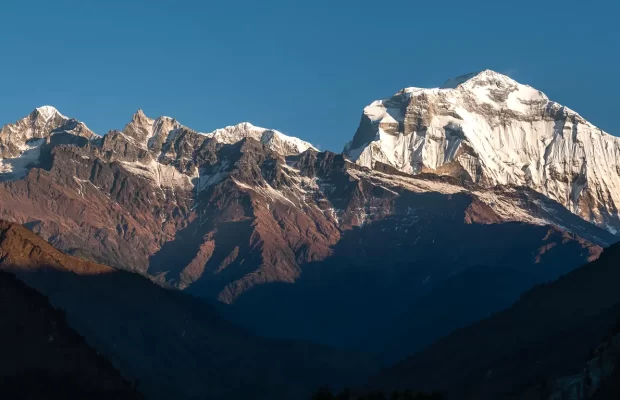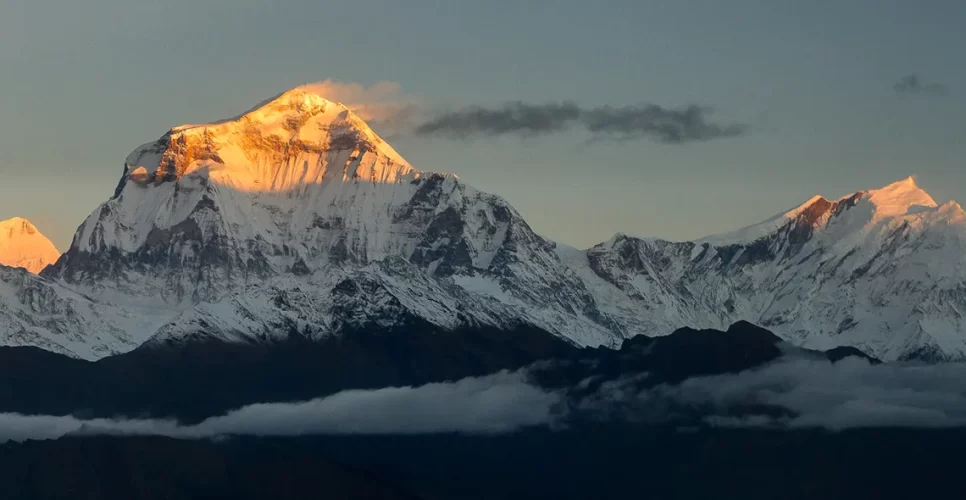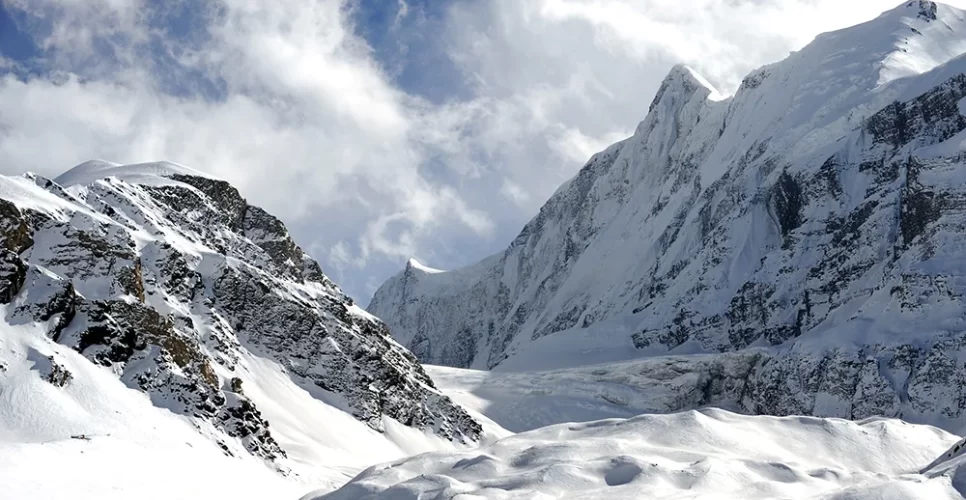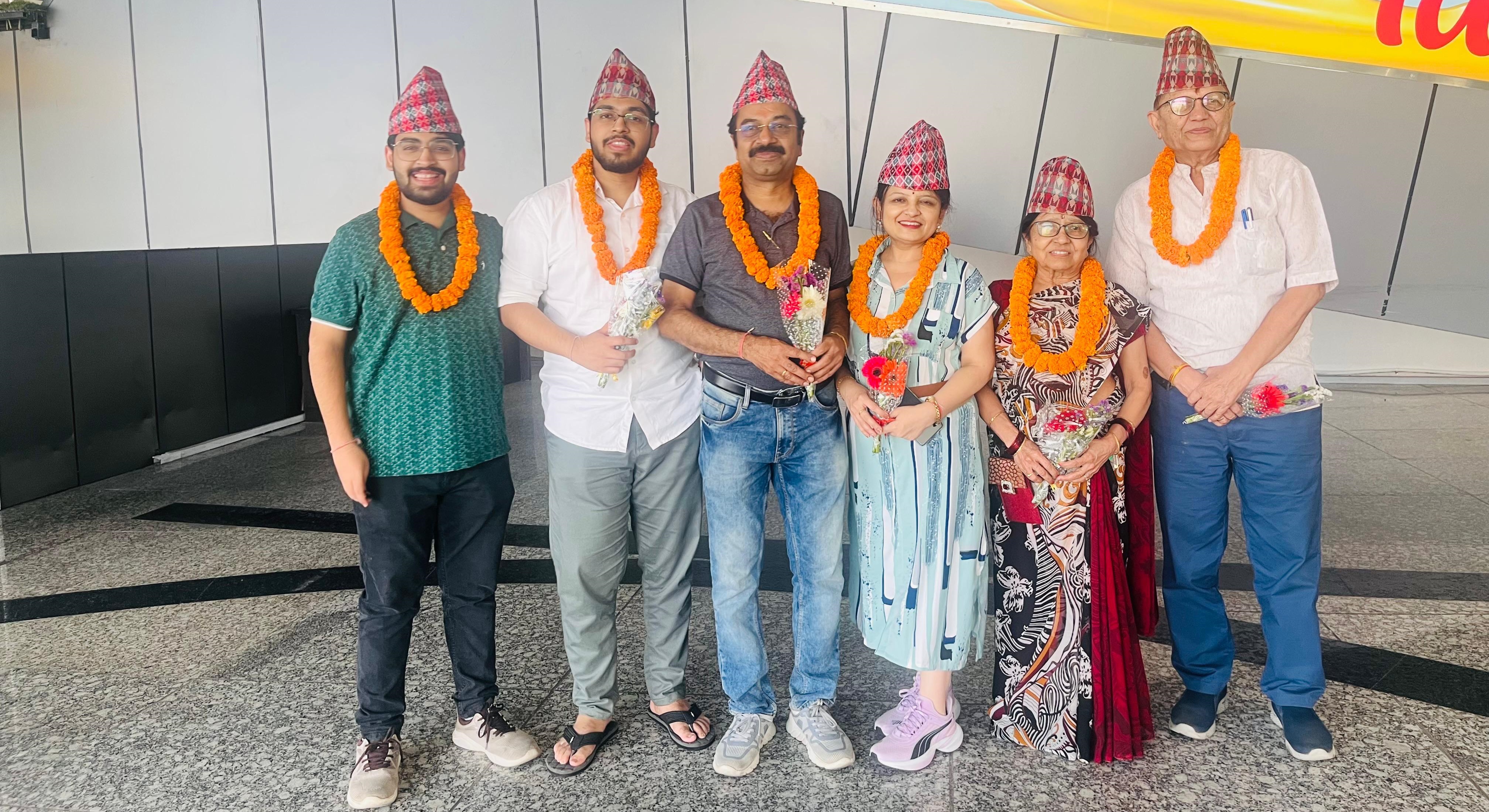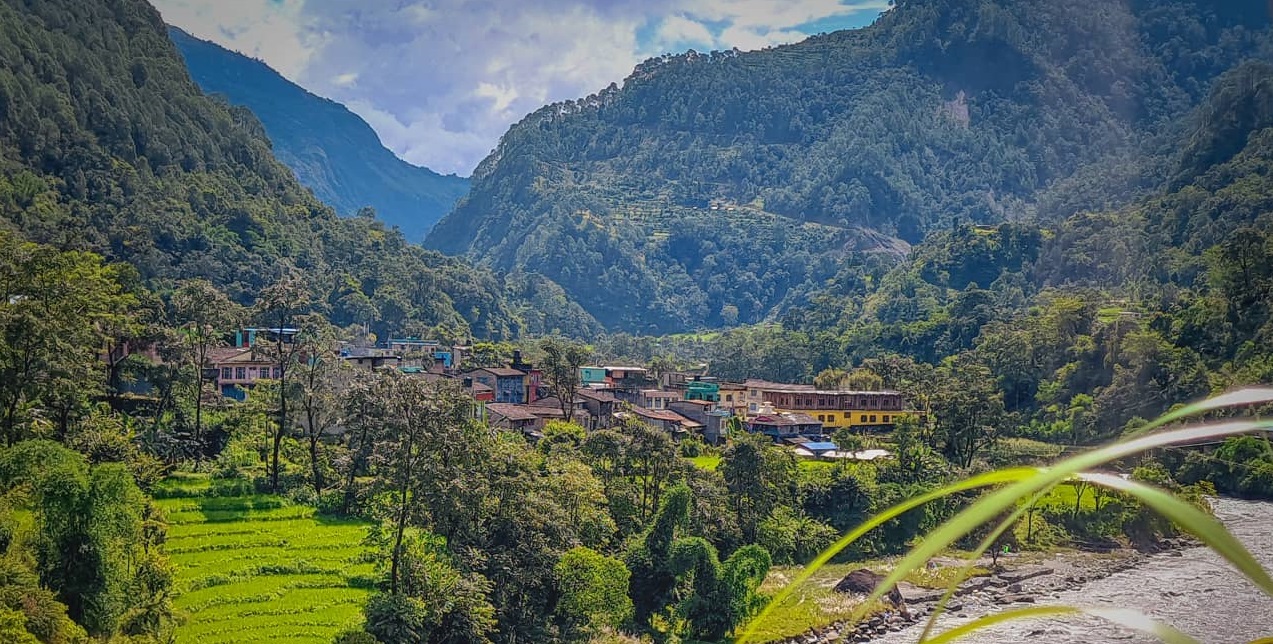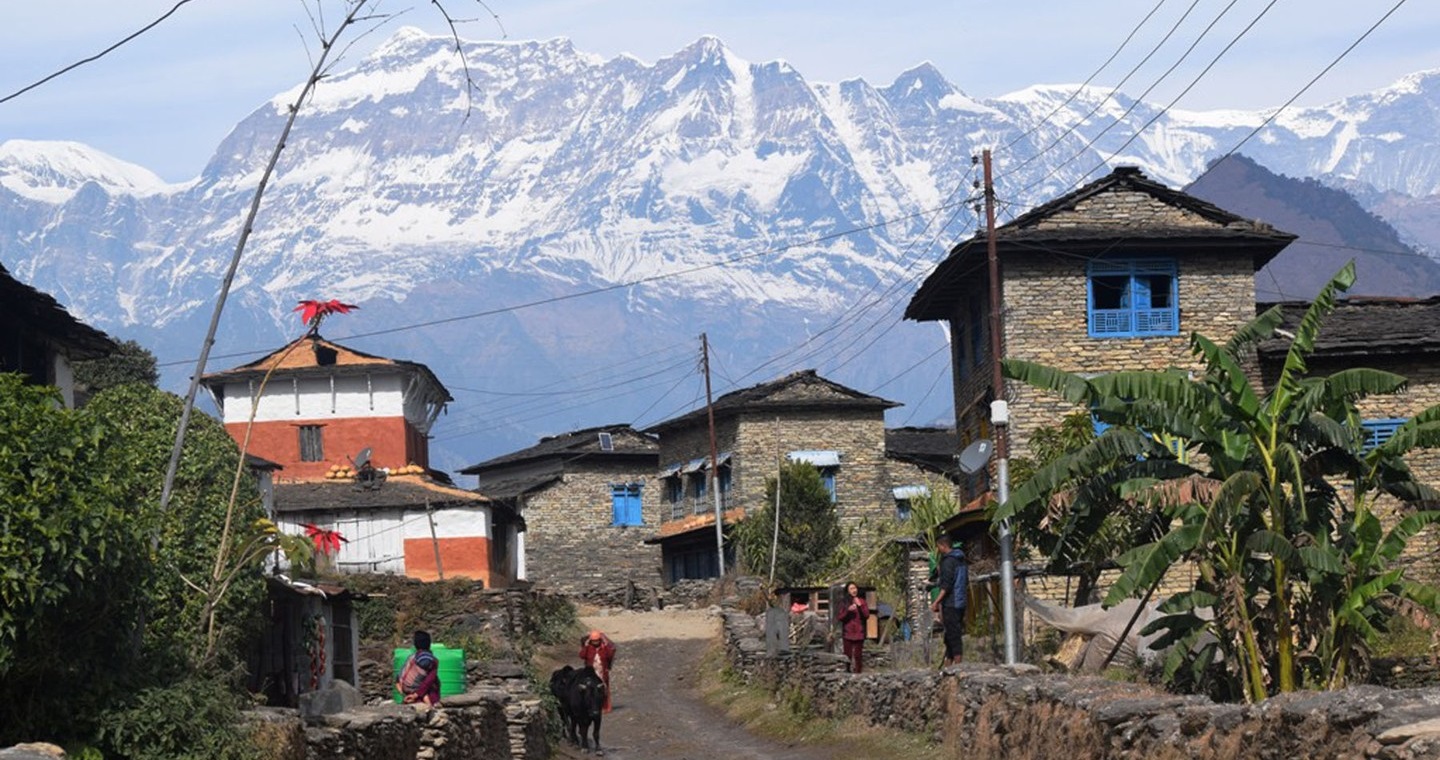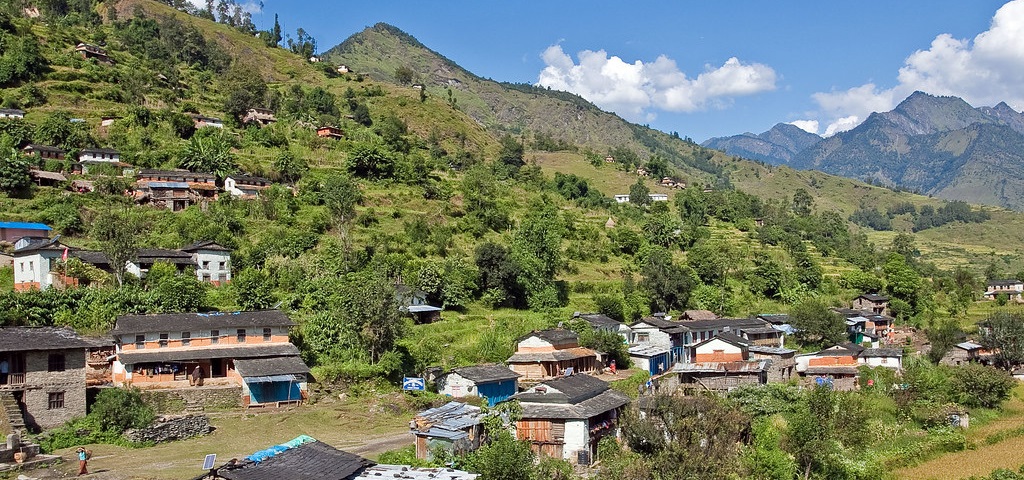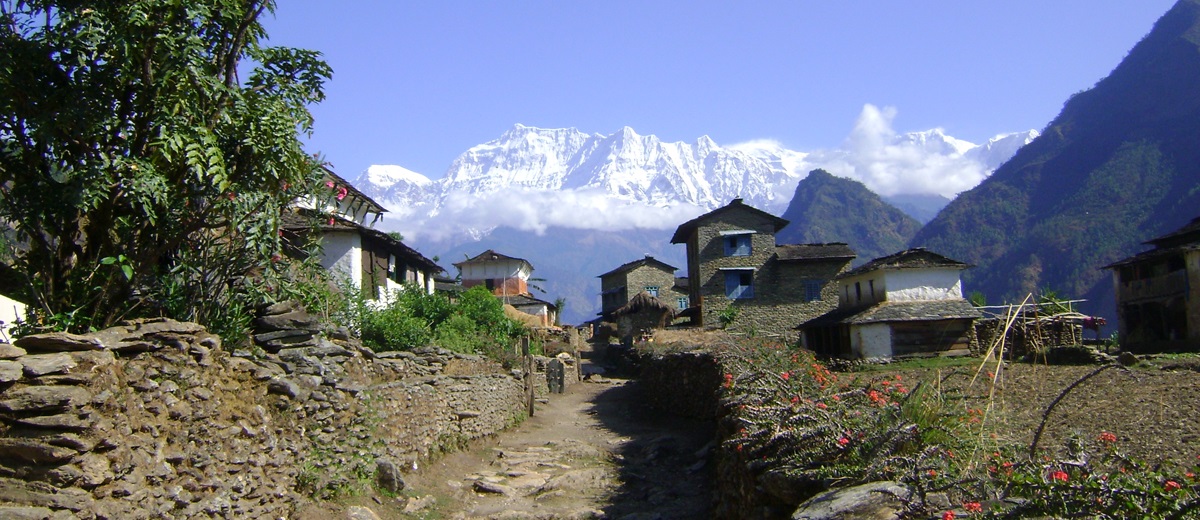Overview of Dhaulagiri Circuit Trek
The Dhaulagiri Circuit Trek is an epic adventure that stands as one of the most challenging and rewarding trekking routes in Nepal. The trek takes you around the towering Dhaulagiri (8,167 meters), the seventh-highest mountain in the world, offering a blend of thrilling terrain, rich cultural experiences, and awe-inspiring natural beauty. It is renowned for its rugged trails, high-altitude passes, and close proximity to some of the most pristine and untouched wilderness in the Himalayas.
This trek is designed for experienced trekkers as it involves navigating through diverse landscapes, including rocky valleys, lush forests, and glaciers. The journey takes trekkers through iconic spots like French Pass (5,360 meters) and Hidden Valley (5,200 meters), both of which are renowned for their dramatic vistas and provide an unforgettable experience. The trek also allows trekkers to explore small, remote villages like Tukuche, Marpha, and Jomsom, where you can interact with the locals and learn about their rich traditions, customs, and lifestyles.
As you circle the Dhaulagiri massif, you’ll be greeted with magnificent views of the surrounding peaks such as Tukche Peak, Nilgiri, and Annapurna. The trek also crosses high-altitude landscapes, passing through glaciers, rocky terrains, and remote valleys, which offers an immersive trekking experience. The glacial camp at Italian Camp (3,600 meters) is another notable stop where trekkers can rest while surrounded by magnificent mountain scenery.
Key Highlights of the Dhaulagiri Circuit Trek:
- Dhaulagiri Peak: The towering seventh-highest peak in the world is a constant companion on this trek.
- French Pass: A challenging pass at an elevation of 5,360 meters, offering panoramic views of Dhaulagiri and the surrounding ranges.
- Hidden Valley: A remote, high-altitude valley surrounded by towering peaks and glaciers.
- Cultural Villages: The trek takes you through isolated villages such as Tukuche, Marpha, and Jomsom, where you can immerse yourself in local traditions and cultures.
- Glacier Camp: A beautiful campsite surrounded by glaciers and dramatic mountain views.
- Italian Camp: A rest stop at a high-altitude camp with mesmerizing mountain vistas.
The Dhaulagiri Circuit Trek also offers the opportunity to visit Muktinath, an important pilgrimage site for both Hindus and Buddhists, before heading to the bustling town of Jomsom and finally arriving in Pokhara. This trek offers the perfect balance of physical challenge, cultural immersion, and scenic beauty, making it a must-do for experienced trekkers seeking an unforgettable Himalayan adventure.
Dhaulagiri Circuit Trek
The Dhaulagiri Circuit Trek is one of the most challenging and exhilarating treks in Nepal, offering an adventure through rugged terrain, alpine meadows, remote valleys, and majestic mountain vistas. Surrounded by some of the world’s highest peaks, including the mighty Dhaulagiri (8,167 meters), this trek is ideal for seasoned trekkers looking for an unforgettable adventure. The circuit presents an exceptional opportunity to witness pristine landscapes, including glaciers, deep valleys, and traditional villages, all while experiencing the vast beauty of the Himalayas.
Best Seasons for Dhaulagiri Circuit Trek
The best time to trek the Dhaulagiri Circuit is during the spring (March to May) and autumn (September to November) seasons. These months offer stable weather conditions, clear skies, and moderate temperatures, making them the most favorable for trekking.
-
Spring (March-May): The trail is vibrant with blooming rhododendrons and lush greenery, offering magnificent landscapes. Temperatures are moderate, and the skies remain clear, providing perfect visibility of the Dhaulagiri massif and surrounding peaks.
-
Autumn (September-November): This is the most popular trekking season. Dry weather, clear skies, and a comfortable climate ensure the best views of Dhaulagiri, Tukche Peak, and the Annapurna Range.
Winter (December to February) can be extremely cold and challenging due to freezing temperatures and heavy snowfall, making higher passes like the French Pass and Dhampus Pass difficult to cross. Monsoon (June to August) brings heavy rains, making the trails slippery and prone to landslides, posing significant risks.
Trek Difficulty and Challenges
The Dhaulagiri Circuit Trek is considered a difficult trek and requires strong physical fitness, preparation for high altitudes, and resilience to rugged conditions. The trek involves multiple high-altitude passes, glaciers, and extended days of walking through remote regions.
Key Challenges:
-
High Altitude: The trek crosses the French Pass (5,360m) and Dhampus Pass (5,244m), where altitude sickness can occur. Acclimatization is crucial to minimize risks.
-
Weather Conditions: Weather can change rapidly in the mountains, so trekkers need to be prepared for sudden cold spells and unpredictable conditions, especially in the high-altitude regions.
-
Physical Endurance: Though not technical, the trek requires a good level of endurance as trekkers will cover an average of 6-8 hours per day on rugged and sometimes steep trails.
Trek Route and Distance
The Dhaulagiri Circuit is a challenging yet rewarding trek, covering over 160 kilometers (depending on the exact route taken). The journey offers a wide variety of landscapes, from lush forests to glaciers and barren high-altitude deserts.
Route Overview:
- Kathmandu to Beni (Drive): 230 km, 8-9 hours
- Beni to Babiachor: 11 km, 4-5 hours
- Babiachor to Dharapani: 14 km, 5-6 hours
- Dharapani to Muri: 15 km, 5-6 hours
- Muri to Boghara: 16 km, 6-7 hours
- Boghara to Dhaulagiri Base Camp: 18 km, 7-8 hours
- Dhaulagiri Base Camp to French Pass: 12 km, 6-7 hours
- French Pass to Hidden Valley: 12 km, 6-7 hours
- Hidden Valley to Dhampus Pass: 14 km, 6-7 hours
- Dhampus Pass to Jomsom (via Marpha): 25 km, 7-8 hours
- Jomsom to Pokhara (Drive or Flight): 200 km (Drive), 6-7 hours / 25 min (Flight)
The entire trek typically takes 16-20 days, depending on acclimatization days and route variations.
Handling Altitude Sickness
Altitude sickness is a major concern, particularly when crossing the French Pass and Dhampus Pass. Symptoms include headaches, nausea, dizziness, and shortness of breath.
How to Prevent Altitude Sickness:
- Acclimatization: Spend extra time at key points like Dharapani and Manang to allow the body to adjust to the increasing altitude.
- Hydration: Drink plenty of water and avoid alcohol and smoking.
- Pacing: Trek at a slow and steady pace, especially at higher elevations.
- Medication: Consult a doctor before the trek to see if Diamox (acetazolamide) is suitable to help with altitude adjustment.
- Descent: If symptoms worsen, descend immediately to a lower altitude.
Physical Preparation for the Trek
Good physical fitness is necessary for the Dhaulagiri Circuit Trek. Training should focus on cardiovascular exercises (running, cycling, swimming) and strength-building exercises for legs and core. Practice walking on uneven terrain with a loaded backpack to simulate trekking conditions.
What to Expect on the Dhaulagiri Circuit Trek
The Dhaulagiri Circuit Trek offers a mix of remote wilderness, challenging terrain, and incredible Himalayan vistas. Key highlights include Dhaulagiri Base Camp, the French Pass, and the Hidden Valley, along with cultural experiences in remote villages.
Group Size for Dhaulagiri Circuit Trek
The trek is typically undertaken in small groups of 2-12 trekkers. Smaller groups allow for more personalized experiences and flexibility with the itinerary.
Accommodation, Food, and Drink
Accommodation on the Dhaulagiri Circuit Trek is primarily in tea houses or basic lodges. The food along the trek typically includes:
- Dal Bhat: Traditional Nepali meal (rice, lentils, vegetables, and curry)
- Momo: Tibetan-style dumplings
- Pasta, soups, and bread: Common options for trekkers
Water: Boiled, filtered, or bottled water should be consumed to avoid stomach issues.
Helicopter Service
Helicopter services are available from Jomsom or Muktinath for quicker returns or in case of emergencies. Helicopter evacuations ensure a safe and fast way to leave the trek in case of health concerns.
Safety on the Trek
Safety is a priority. Guides and porters are trained in first aid and altitude sickness management. Always trek with a licensed guide and ensure your group is insured.
Safety Tips:
- Trek with a licensed guide and insured porters.
- Carry a first-aid kit and necessary medications.
- Have travel insurance that covers high-altitude trekking and emergency evacuation.
Entry Permits for the Dhaulagiri Circuit Trek
To trek the Dhaulagiri Circuit, you’ll need the following permits:
- Dhaulagiri Conservation Area Permit (DCAP)
- Trekkers’ Information Management System (TIMS) Card
These permits are arranged by trekking companies to ensure a smooth trekking experience.
Conclusion
The Dhaulagiri Circuit Trek is one of Nepal’s most challenging and rewarding treks, offering a perfect blend of natural beauty, physical endurance, and cultural experiences. It’s an ideal trek for experienced trekkers who seek a truly remote adventure. Whether you’re crossing the French Pass or soaking in the views of the Annapurna and Dhaulagiri ranges, this trek promises memories that will last a lifetime.



